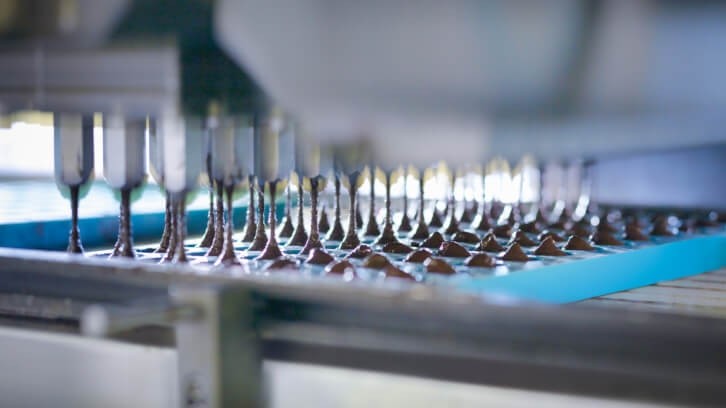What can producers learn from Barry Callebaut’s €700 million funding?

As the chocolate giant behind a whole host of confectionery brands, including Carma, Mona Lisa, and Sicao, announced its multi-million-dollar financing deal earlier this month, it raised the question of what the leading chocolate company could be planning. And what does the need for such a huge investment suggest about today’s confectionery industry?
It’s clear that market volatility in cocoa is still here. Prices are the highest they have been for almost half a century, and costs re-entered the $10,000 a tonne price point earlier in June 2024. High prices and ongoing uncertainty in the chocolate sector are behind one of the globe’s biggest chocolate names, Barry Callebaut, sourcing the huge investment sum of €700m.
Barry Callebaut secures €700 million investment
The Belgium-headquartered chocolate and cocoa manufacturer announced the news on June 10, 2024, the same week the ICCO reported the industry’s return to $10,000 a tonne prices.
The Barry Callebaut Group has raised its funding on the Euro bond capital markets. “We are pleased with the significant interest from investors that has enabled us to secure attractive long-term financing,” says Peter Vanneste, CFO of the Barry Callebaut Group.
The company hopes its cash injection will help it navigate the instability and volatility of today’s global cocoa market. “While Barry Callebaut has a strong balance sheet, the issuance provides us with greater financial flexibility in the context of a volatile cocoa market environment,” Vanneste says. Amid ongoing cocoa price rises, it plans to use the staggering sum to provide certainty and help protect its market position.
Back in April 2024, the company announced it had secured CHF600m as part of its refinancing measures to navigate the significant increase in cocoa prices in recent months. Barry Callebaut has also put in place a €262.5m loan for a period of two years to help mitigate the higher costs required to source cocoa beans.
Competition concerns for SMEs
Barry Callebaut’s latest round of financing may create concerns for smaller and less established confectionery brands looking to scale. Undoubtedly, smaller producers and manufacturers will find it harder to compete with big money brands when there’s this much investment behind them.
However, various funds are available to confectionery startups and SMEs to help them navigate the rising costs of cocoa by exploring alternatives and other innovations.
Government-led funds exist to help confectionery brands launch and grow their businesses. In the European Union (EU), the EIT Food Impact Fund is designed to support agrifood startups in their new product developments. These aim to contribute to net zero food system efforts, support risk reduction initiatives to achieve a fair and resilient food system and to help create healthier lives through food launches.
“The Impact Fund has previously provided funding up to €1.5m per venture to implement innovation activities through the development and commercialisation of new technologies, products or services,” says Lorena Savani, Mission Lead of Healthier Lives through Food at EIT Food.
The European Investment Fund (EIF) announced in April 2024 that it was committing €40m to support Europe’s food system. With the money, EIF aims to improve farmer fairness, consumer health, and environmental friendliness.
The EIF is provided under the InvestEU programme and will back the existing European Agri Transition Fund, which has a target of between €150m and €300m. The fund’s first closing round will occur in 2024, coinciding with the rocky financial landscape that cocoa farmers and producers continue to navigate. The InvestEU programme aims to spur more than €372bn in further investment between 2021 and 2027, driven by EU policy priorities including supporting SMEs and the green transition.
Funding is not just for times of instability
Funding is not only necessary as a preventative measure in times of industry crisis. It’s in place to support several vital functions.
“Accelerating innovation is essential to tackling some of the biggest challenges facing the food system,” says Savani. Funding providers also strive to provide initiatives that directly and indirectly help confectionery start-ups “with high potential to plug the investment gap”, Savani adds. These organisations look to support the following:
1. Research and development (R&D) activities
“R&D receives significant investment to develop new products, improve food safety, preservation, packaging and enhance nutritional value,” says Savani.
2. Supporting sustainability developments
There are also those funding initiatives that support environmental efforts. “Sustainability initiatives aim to reduce environmental impact through sustainable sourcing, waste reduction, and energy-efficient processes,” she says.
“SMEs play a pivotal role in the green transition, particularly in the agrifood sector,” agrees Marjut Falkstedt, Chief Executive Officer of EIF. “Sustainable adaptation strategies require funding,” Falkstedt adds.
3. Permissible indulgence launches
The confectionery industry is also actively pursuing several innovations to address health concerns related to sugar, saturated fat, portion control, functional ingredients and new tech. “The final aim is to make confectionery products healthier without sacrificing taste and enjoyment – catering to the growing consumer demand for better-for-you treats,” says Savani.
4. Prepare for future success
“Funding isn’t the only challenge,” Savani says. These platforms also support SME confectionery producers by assisting with access to collaboration opportunities through networks of corporate partners, research centres and investors. “Partnership readiness” is part of the investment strategy for SME producers to help them “be in a strong position to raise subsequent investments,” she says.













